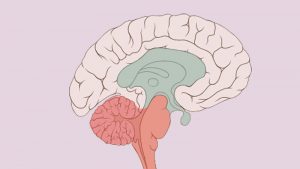
Gyrotonic Vs. Pilates
Just when you thought you were cool for doing Pilates, its cousin, gryrotonic, enters the scene. At first, the two systems seem similar. Both enhance strength and flexibility, and both offer equipment and non-equipment workouts. Just as German-born Joseph Pilates devised his system in order to overcome childhood illnesses such as rickets and asthma, Romanian-born dancer Juliu Horvath created gyrotonic exercise for rehabilitation of his lumbar and Achilles tendon injuries. While the two methods share similar exercise theories, they differ in actual practice.
Mats vs. Stools
The Pilates non-equipment exercises are performed on an exercise mat. The system includes exercises in the supine, prone, side-lying, kneeling, and, on some occasions, standing positions. When speaking of these equipment-free exercises, simply refer to them as Pilates mat. In contrast, Juliu Horvath gave his body weight exercises the name “Gyrokinesis.” While some of these movements are performed on an exercise mat, many are done while sitting upright on a stool.
Lines vs. Spirals
Linear and circular movements form the workout repertory of both systems. Pilates leans toward linear movements, while the gyrotonic system is famous for its spiraling movement patterns. Both techniques benefit the body in different ways, but athletes involved in rotational sports — such as golf, tennis and baseball — might reap exceptional benefits from the oblique-strengthening exercises of the gyrotonic method. Performers of specific dance forms might also prefer one system over the other. The Martha Graham dance technique, for example, features a series of intricate spiraling movements. Graham dance Terese Capucilli told “Dance Magazine” that she prefers gyrotonic exercise because “It creates spirals in the body that are so in sync with the Graham technique.”
Equipment Comparisons
Joseph Pilates developed of variety of equipment, including the Reformer, the Cadillac and the chair, along with smaller apparatus, such as the barrel and the fitness circle. Juliu Horvath created one piece of equipment, and called it the Gyrotonic Expansion System. Most of the Pilates equipment use a spring and bungee cord system for resistance, whereas the Gyrotonic Expansion System uses weights and pulleys. Even though Pilates is the older of the two systems, thanks to modern technology, many of the machines have a space-age appearance, whereas the huge, wooden gyrotonic machines would fit right into a steampunk novel.
Seed Center vs Powerhouse
Your core muscles called by any other name are just as important to your overall health and well-being. Joseph Pilates and Juliu Horvath had different ways of describing them, but both men were way ahead of their time. Joe’s powerhouse included the rectus abdominis, external obliques, internal obliques, transversus abdominis, diaphram, multifidus, pelvic floor, adductors and glute muscle team. Juliu’s seed center has metaphysical implications. Master gyrotonic trainer Lisa Marie Goodwin told “IDEA Fitness” that “”The Seed Center, or yolk center, is that place of germination where the life force begins. It starts from the energy body and moves into the physical or anatomical body.”
source: http://healthyliving.azcentral.com/




